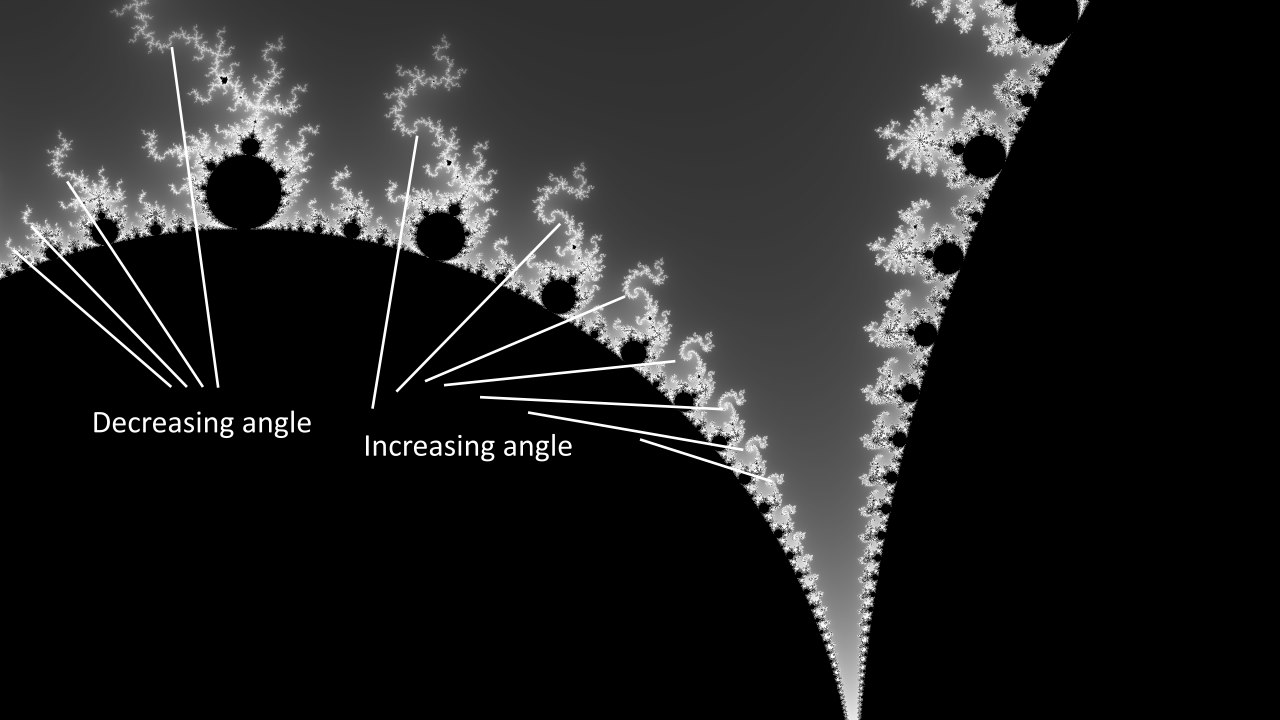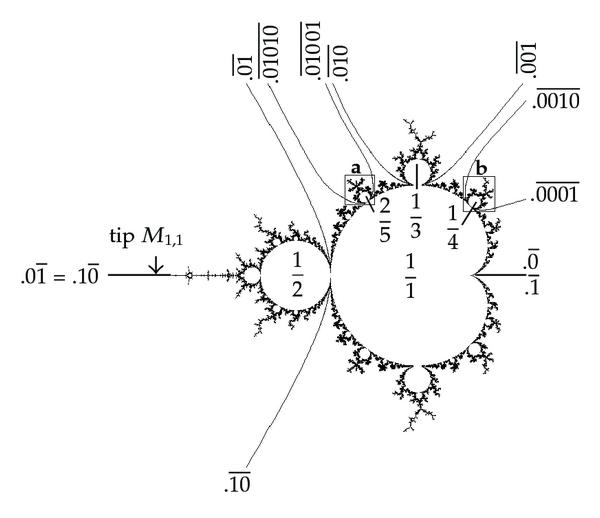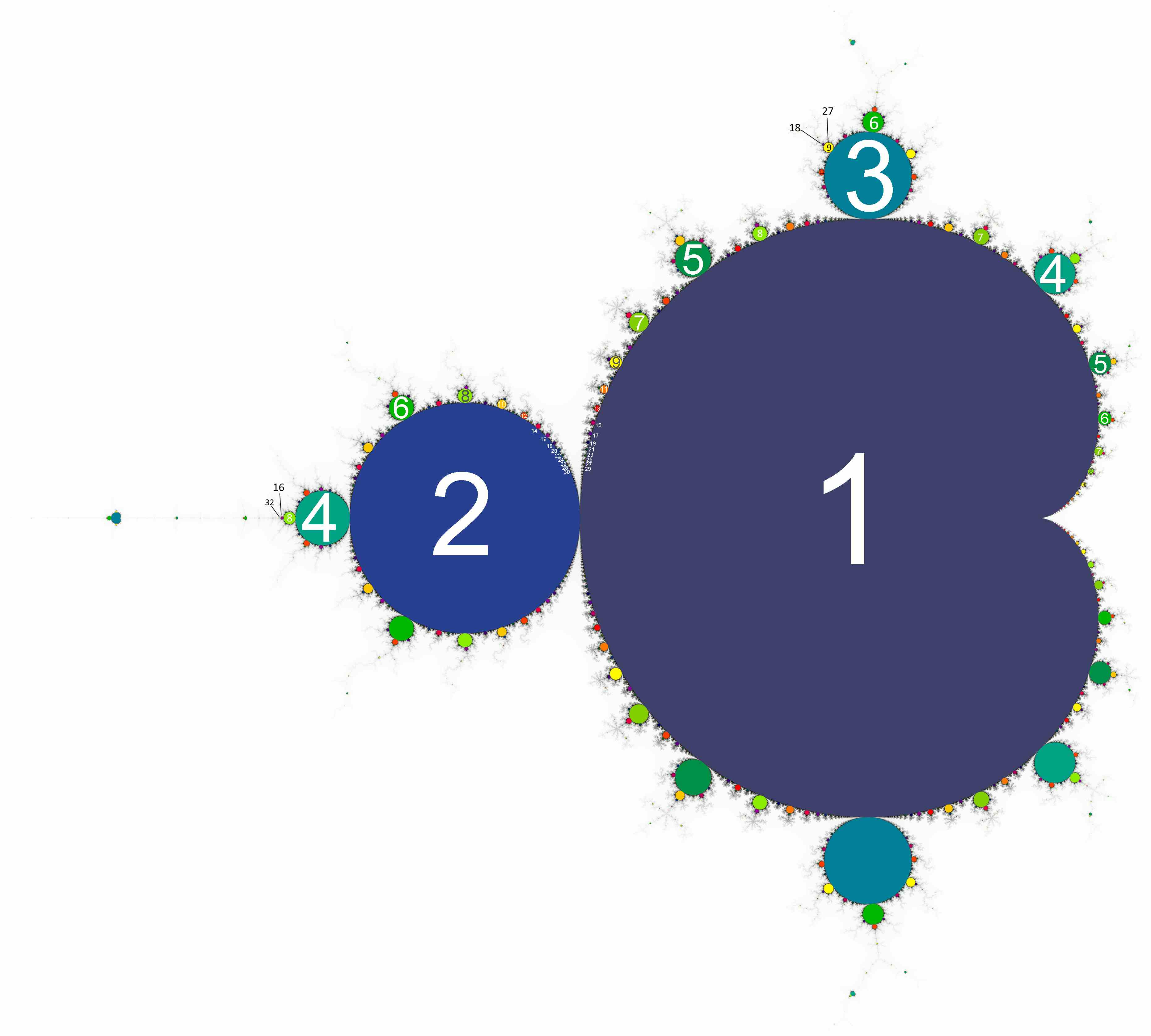To the untrained eye, the Mandelbrot-Set might look chaotic and the arrangement of the patterns seem random.
But they are the opposite, they are arranged to very precise rules and you can find all kind of mathematics just by observing the Mandelbrot-Set.
Basic Calculus:
- Counting: The tips of the smaller and smaller bulbs to the right always add one.
- Multiplication: A period 3 bulb will have smaller bulbs on it that are 3*x period
- Exponential: Use a bulb of period x as base and find the attached bulb that is the y-largest to calculate x^y, repeat y-2 times. Example 3^3=27 is shown in image below.
simpler example is the tip to the left, each next bulb is 2^(y+1) - Addition: http://math.bu.edu/DYSYS/FRACGEOM2/node6.html#SECTION00060000000000000000
Look at this fullscreen and try for yourself.
The Main Cardiod has a Period of 1, the next largest bulb on it has a period of 2, the thirdlargest has a period of three, now find the next largest between 2 and 3, it will have 5 arms, so a period5. Now the next largest between 3 and 5 will have 8 arms and so on..
 Pi
Pi 
Power Law & Logarithmic Map:





